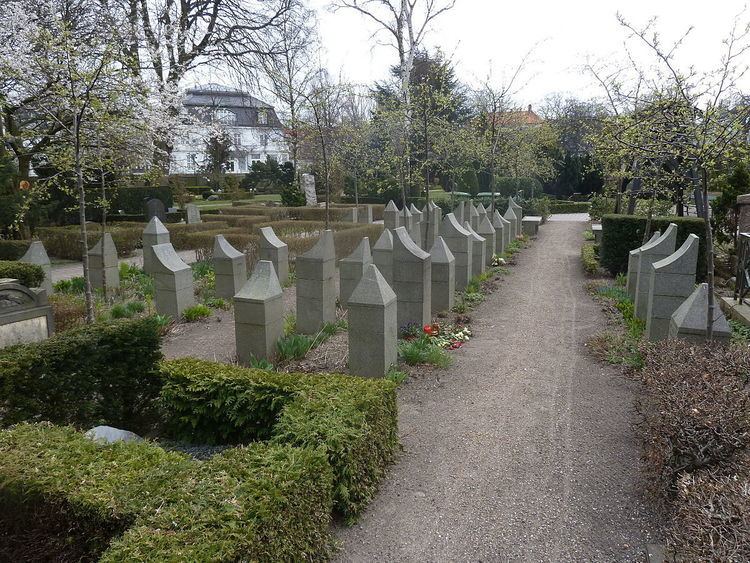Established 1664 Country Denmark Phone +45 35 42 79 51 | Location Østerbro, Copenhagen Size hectares | |
 | ||
Website [garnisonskirkegaard Official web site] Address Garnisons Kirkegård, Dag Hammarskjölds Allé 10, 2100 København Ø, Denmark Burials Christian de Meza, Georg Carstensen, Buster Larsen Similar Church of Holmen, Garnison, Trinitatis Church, Church of Our Saviour, Assistens Cemetery | ||
Garnisons Cemetery (Danish: Garnisons Kirkegård) is a cemetery in Copenhagen, Denmark. It was inaugurated in 1671 on a site just outside the Eastern City Gate, as a military cemetery complementing the naval Holmens Cemetery which had been inaugurated a few years earlier on a neighbouring site. Later the cemetery was opened to civilian burials as well.
Contents
Garnisons Cemetery is an independent cemetery, managed by the parochial church council, placed under the army's highest authority.
History
Garnisons Cemetery was founded by a decree from King Frederick III and laid out in 1664 on a site outside the Bastioned Fortifications, next to the main road leading in and out of the Eastern City Gate and opposite the naval Holmens Cemetery which was laid out around the same time. Burials began the same year but the site, former marshland, was rather unsuitable for the purpose since ground water levels made it hard to bury the bodies in sufficiently deep grounds. In 1671 some improvements were made when the site was enclosed by pallisades and ditches and the cemetery was officially inaugurated on 13 July 1671.
During the first decades, the cemetery remained relatively little used. In 1706 Garnison's Church was built on Sankt Annæ Plads and in 1723 the Soldier's Cemetery received its current name.
In 1711 Copenhagen was struck by an outbreak of plague which killed an estimated 23,000 citizens. In a move to control disease, the authorities provided that all victims of the plague, within 24 hours and without a ceremony, had to be buried at Garnisons Cemetery or a Municipal Plague Cemetery which was set up next to it. From 1720 Garnisons Cemetery was officially opened to civilian burials.
The cemetery was neglected and gradually fell into despair. In 1812 it was renovated and from then on began to attract more prominent citizens.
Garnisons Church today
One of the many characteristics of the cemetery, are the many old graves, still owned by families, and war-monuments of fallen in the wars 1848 - 1850 and 1864.
Interments
The cemetery contains one Commonwealth war grave of World War II, a Danish officer of the British Royal Army Service Corps,. Danish-born British Army Brigadier Percy Hansen, a Victoria Cross recipient, is also buried here.
